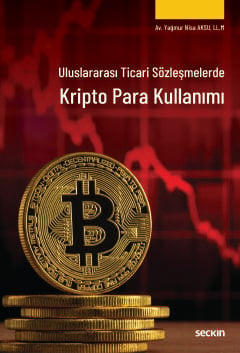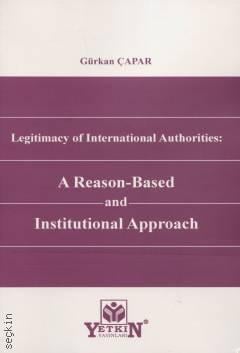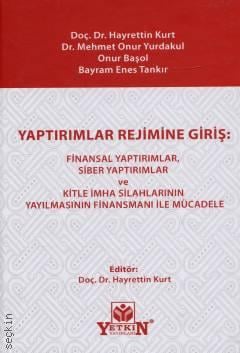>
Hukuk Kitapları>
Uluslararası Hukuk>
A Critical Approach to the Regulation of a Public Corporation's Purchase of its Own Shares on the Open Market: Lessons from the Transatlantic Comparison

A Critical Approach to the Regulation of a Public Corporation's Purchase of its Own Shares on the Open Market: Lessons from the Transatlantic Comparison
1. Baskı,
Aralık 2024
Kitabın Detayları
Dili:
İngilizce
Ebat:
16x24
Sayfa Sayısı:
283
Kitabın Fiyatı:
360,00₺
Temin süresi 2-3 gündür.
Kitabın Açıklaması
Open market repurchases (OMRs)-by far the most common form of share repurchases-have consistently increased and reached record levels towards the end of 2010s in the US in almost four decades since the adoption of the safe harbor rule. This dramatic increase has been largely attributed to various purported benefits of OMRs within the Anglo-American economic and corporate model. However, these benefits fail to fully explain such increase. This failure suggests that illegitimate purposes might have also contributed to the increase in the number of OMRs and resulted in their excessive use. This suggestion is supported by the ineffectiveness of the rules applicable to OMRs in the US. On the other hand, any and all share repurchases used to be strictly regulated in the EU. However, some EU Member States and later the EU itself relaxed their relevant legislation and hereat adopted a safe harbor rule on OMRs that is essentially similar to that in the US.
While this substantial legal convergence has also been followed by an increase in the number of OMRs in the EU, the number of OMRs in the EU has been much lower than in the US. The less frequent use of OMRs supports the claim that EU corporations substantially persist in the Continental European economic and corporate model. Such persistence has also been partly reflected on the OMR regulation in the EU that prescribes a less ineffective framework than that in the US through a few but crucial regulatory technical differences.
Hence, this book compares and contrasts economic and corporate settings in the US and the EU, and in particular, rules and practices relating to OMRs on both sides of the Atlantic. The end result of this academic research is a series of regulatory proposals to maintain the purported benefits while curbing the number and eliminating the potential drawbacks arising from the abuse of OMRs, primarily in the US and also in the EU and elsewhere including Turkiye that closely follow the EU acquis.
Kitabın Konu Başlıkları

İntroduction

Reassessment of Purported Benefits of Open Market Repurchases and Potential Drawbacks Arising From The Abuse of Open Market Repurchases in The Us: A Law and Economics Perspective

Law and Economics of Open Market Repurchases in The Eu in Comparison With The Us: Convergence, DivergenceBoth?

Reforming The Rules on Open Market Repurchases in The Us and The Eu

Conclusion
Kitapla İlgili Kategoriler
Kitabın İçindekileri
TABLE OF CONTENTS
CHAPTER I. INTRODUCTION
A. Research Question
B. Theoretical Framework
C. Literature Review
D. Research Method
E. Research Limitations
F. Main Argument and Dissertation Outline
CHAPTER II. REASSESSMENT OF PURPORTED BENEFITS OF OPEN MARKET REPURCHASES AND POTENTIAL DRAWBACKS ARISING FROM THE ABUSE OF OPEN MARKET REPURCHASES IN THE US: A LAW AND ECONOMICS PERSPECTIVE
A. Introduction
B. An Overview of the Development of Rules Applicable to OMRs in the US
C. Purported Benefits of OMRs in the US
D. Potential Drawbacks Arising from the Abuse of OMRs in the US
E. Interim Conclusion
CHAPTER III. LAW AND ECONOMICS OF OPEN MARKET REPURCHASES IN THE EU IN COMPARISON WITH THE US: CONVERGENCE, DIVERGENCEBOTH?
A. Introduction
B. An Overview of Development of Rules Applicable to OMRs in the EU
C. Potential Purposes for EU Companies to Execute OMRs
D. Potential Drawbacks Arising from the Abuse of OMRs in the EU
E. Interim Conclusion
CHAPTER IV. REFORMING THE RULES ON OPEN MARKET REPURCHASES IN THE US AND THE EU
A. Introduction
B. Review of Previous Regulatory Proposals on OMRs
C. Regulatory Technical Proposals
D. Complementary Proposals
E. Cost–Benefit Analysis of Proposals on OMRs
F. Summary of Recommendations
CHAPTER V. CONCLUSION
A. Dissertation Summary
B. The Bigger Picture
C. Future Remarks
Hakkımızda
|
Uluslararası Yayınevi Belgesi|
Kaynakça Dosyası|
Kişisel Verilerin Korunması |
Üyelik|
Siparişlerim|
İade Politikası|
İletişim


